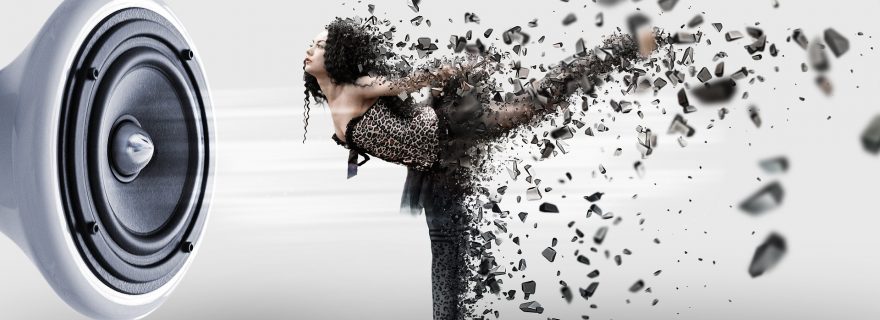Moving to music can change your brain
Music is closely tied to movement, not only in our experience but also in the brain. Only, what actually happens when we move to music? A new study sheds some light on this by showing changes in the brain after learning a new movement to music.
Most of us will know the feeling: you hear a song that you like and you get a sudden urge to move, even if it’s just nodding your head or tapping your foot. Or maybe you know what it’s like to play some upbeat music to keep you going while you exercise. It seems like the music is providing some support for our hard work, and this idea has also been used by therapists who help patients with movement problems recover, or at least improve their movement abilities. Even though the research on music and how we interact with it has taken off in the last decades, it’s still not clear what is happening in the brain when we move to music, or why we play music when we do hard work like exercising or movement rehabilitation, or what happens in the brain when we move to a beat. Does music only kick-start the movement, like in the example of hearing something groovy and jumping up to dance? Or does it actually support movement, perhaps by providing a steady rhythm, or maybe by motivating us in another way?
To look at this question, other questions need to be answered first. We already know that listening to musical rhythms leads to brain activation in regions that are also known to be important for movement. Only, that can’t be the only argument – the brain is very efficient and tends to have multiple uses for brain areas, it doesn’t mean the same function is involved. So, a next question might be whether brain activations related to movement change when we move to music, and several studies suggest that indeed this is the case. Although there isn’t a consistent answer yet on what changes exactly, it seems that the cerebellum is important here, as parts of it are more activated when moving to music than when moving in silence, even when the movement is identical. The cerebellum is a region at the basis of the brain, long thought of as mostly involved in automatic movements, but more and more found to have many other functions. But what does this extra activation mean precisely, when the movement is the same?
Although positive effects of music on exercising are found, other studies don’t find this effect. One study looking at how much energy you actually spend while running to rhythmic sounds compared music to a metronome, a regular ticking sound. Here, test subjects ran just as long with music as they did to the boring ticks. Only, the music made runners feel like they worked a little less hard. So maybe, although this is pure speculation for now, the cerebellum activation has something to do with the feeling of reduced effort. To know more, this would need to be tested directly in future research.
So how could this help someone who needs movement rehabilitation? Of course the feeling of needing less effort is very important, and might be enough motivation to use music in challenging movement situations. But what if music could also help you learn? A recent study shows some interesting results: after four weeks of practicing a finger movement to music, a change in brain structure was found. Importantly, this change wasn’t there for a group that practiced the same movement without the music, while keeping everything else equal. Even the learning was equal: the group who practiced with music performed the movement just as well as the other group! Only the brains of the people in the music group showed a small change in the white matter fibers that connect areas of the brain that are involved in hearing with those that are involved in moving. So the change seen in only one group cannot be related to simply getting better at the task, but is specific to using music. One interesting, but again speculative, possibility is that the cerebellum activity moving to music has a role in how the brain changes, an idea for which there is some scientific support.
Although we have some pieces of the puzzle of how music and movement are related, we still have quite a way to go before we know what music does, how it works, and how we can use it. Of course what we would like to know are things like what would happen when someone who actually needs to rehabilitate movement would use music to learn; maybe their brain changes will be bigger. And what kind of movements are suitable; could it be any kind of movement? And what kind of music is best; does it matter if it’s something you like or not? Once we have answers to those kinds of questions, we can move forward to apply these findings in practice, and use music to its fullest supportive potential.



1 Comment
As a musictherapist, working in rehabilitation, I find this very inspiring.
It seems that science is reveiling things that we've been working with by intuition all along. I would like to learn more.....